Do you find choosing an HVAC system tricky or want to save energy with your HVAC? Our guide has answers. It will show you how to make your HVAC work better and use less energy.
We will talk about basic ideas and some harder ways to work with HVACs. This info is good for pros and homeowners. We cover picking the right tools, making maps, and looking after your HVAC gear.
Key Takeaways
- Comprehensive overview of HVAC systems for both new and experienced users.
- Insights on energy-efficient HVAC solutions for optimal performance.
- Vital HVAC maintenance tips to ensure long-lasting efficiency.
- Guidance on selecting the right HVAC equipment for various needs.
- Step-by-step instructions for exporting schematics and building airflow systems.
- Practical advice for handling different types of HVAC equipment.
What Is an HVAC System?
An HVAC system keeps indoor spaces comfy all year. It does this by heating, cooling, and moving air. For homes and businesses, knowing the basics helps keep things running smoothly and the air clean.
Understanding HVAC Basics
HVAC systems control a building’s temp and air. They warm in winter and cool in summer. These systems are made up of different parts that work together to keep us cozy without wasting energy. Knowing how they work is key to being comfy at home, plus it helps when you have questions or want to make improvements.
Key Components of HVAC Systems
There are many parts to an HVAC setup, each with a special job. Here are a few:
- Refrigerants: These cool or heat the air by absorbing and releasing heat.
- Evaporators and Condensers: They’re important in the process of exchanging heat.
- Compressors: They move refrigerants between the evaporator and condenser.
- Ductwork and Vents: Channels that air travels through in the building.
- Blower Motors: These move air through the system and into rooms.
Knowing about these pieces can really help when your HVAC has a problem. Keeping up with maintenance and understanding the system makes your air cleaner and saves energy.
Types of HVAC Systems
Looking for an HVAC system? There are many kinds to meet different needs. You can find central heating and cooling, hybrid systems, and even compact ductless choices.
Central Heating and Cooling Systems
Central systems heat and cool entire buildings. They use ducts to spread the treated air. These are great for big spaces, keeping the air consistent and clean. For the best results, use an HVAC installation checklist when setting them up.
Hybrid Split Systems
Hybrid split systems switch between electricity and gas to heat or cool. This ability can save lots of energy, making them a smart pick for cost-conscious buyers. They work well in every climate and help manage utility bills, good for businesses.
Ductless Mini-Splits
Ductless mini-splits are perfect for small spots with no ductwork. They link an outdoor and indoor unit without ducts. This makes setting them up easy and lessens energy waste. They’re a top choice for saving money on install and provide focused heating or cooling in homes and businesses.
- Which type of HVAC system is best for large buildings?
- What benefits do hybrid split systems offer for energy savings?
- How do ductless mini-splits improve installation efficiency?
- Can central heating systems enhance indoor air quality?
- What factors should be included in an HVAC installation checklist?
- Are there specific HVAC cost-saving strategies for hybrid systems?
- What commercial HVAC solutions are available for small businesses?
- How does a hybrid HVAC system switch between energy sources?
- What are the space-saving benefits of ductless mini-splits?
- Why are central heating and cooling systems preferred for larger spaces?
Knowing the different HVAC systems helps you pick the right one for your home or office. Each type brings special benefits for saving energy, feeling cozy, and spending less money.
Energy-efficient HVAC Solutions
Energy costs going up and the environment in trouble means we need energy-efficient HVAC solutions more than ever. These systems use less energy and cut down on greenhouse gas emissions. They help us move towards a better, greener future. Let’s look at the energy-efficient choices for HVAC.
Geothermal HVAC Systems
Geothermal HVAC systems take the earth’s consistent temperature to heat, cool, and do hot water. This method is very effective and helps nature. They work by moving heat to or from the ground through buried pipes. Geothermal systems save a lot of energy. Plus, they pollute less and are very comfy, with little harm to the environment.
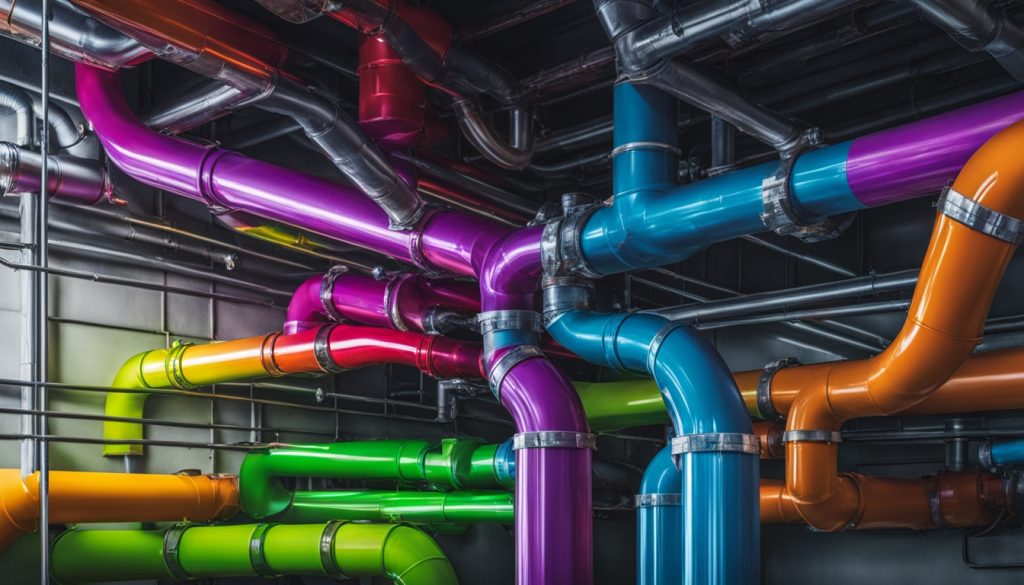
Heat Pumps and Smart Thermostats
Heat pumps are a great pick for saving energy in HVAC. They move heat instead of creating it, which is much better than the usual systems. When you add smart thermostats, heat pumps become super efficient. Smart thermostats let you control your home’s temperature perfectly. They know your habits and adjust automatically for the best energy use.
Today’s energy-efficient HVAC solutions use smart tech a lot. Companies like TE Connectivity are leading. They make high-tech plugs and sensors that help your system work its best. This way, you get a cozy home that saves energy and cuts your carbon print.
Indoor Air Quality Solutions
Indoor air quality is a big part of your home’s HVAC system. It affects how warm or cool your home feels. It also deals with the cleanness and movement of the air. Good indoor air quality solutions make your space healthier. They cut down on bad stuff in the air, like dirt and things that cause allergies.
Keeping your air filters clean is a top HVAC maintenance tip that improves the air. HEPA filters catch tiny particles. These particles can make the air dirty, like dust, pollen, and pet hair. So, your air gets cleaned up before you breathe it in.
Letting fresh air in and moving the old air out is also crucial. You can do this by opening windows. Or, you can use special fans and cleaners in your HVAC system. It’s about getting rid of the bad air inside.
Worried about your HVAC system? Watch for bad air clues, like bad smells or a lot of dust. Fixing these quickly stops more problems later. Using UV lights in your ducts can also kill mold and germs, making the air cleaner.
If you want to keep your indoor air top-notch all the time, try these tips:
- Have your HVAC checked and maintained often.
- Get the best air filters you can.
- Use air cleaners and dehumidifiers.
- Add a whole-house system for fresh air.
- Put in UV lights to fight germs.
To see how different air quality solutions compare, look at this table:
| Air Quality Solution | Benefits | Maintenance Tips |
|---|---|---|
| High-Efficiency Filters | Removes 99.97% of pollutants | Replace every 3-6 months |
| UV Germicidal Lights | Eliminates mold and bacteria | Replace bulbs annually |
| Whole-House Ventilation | Improves air circulation | Inspect vents and fans quarterly |
| Air Purifiers | Targets specific pollutants | Clean filters monthly |
| Dehumidifiers | Reduces mold and mildew | Empty reservoir daily |
Using these HVAC troubleshooting guide tips keeps your system running well. It also makes your home a healthier place. Doing HVAC maintenance regularly is key to better air and comfort in your house.
HVAC Maintenance Tips
Maintaining your HVAC system keeps it working well for longer. Check it often and change filters on time. This helps your heating and cooling work better.
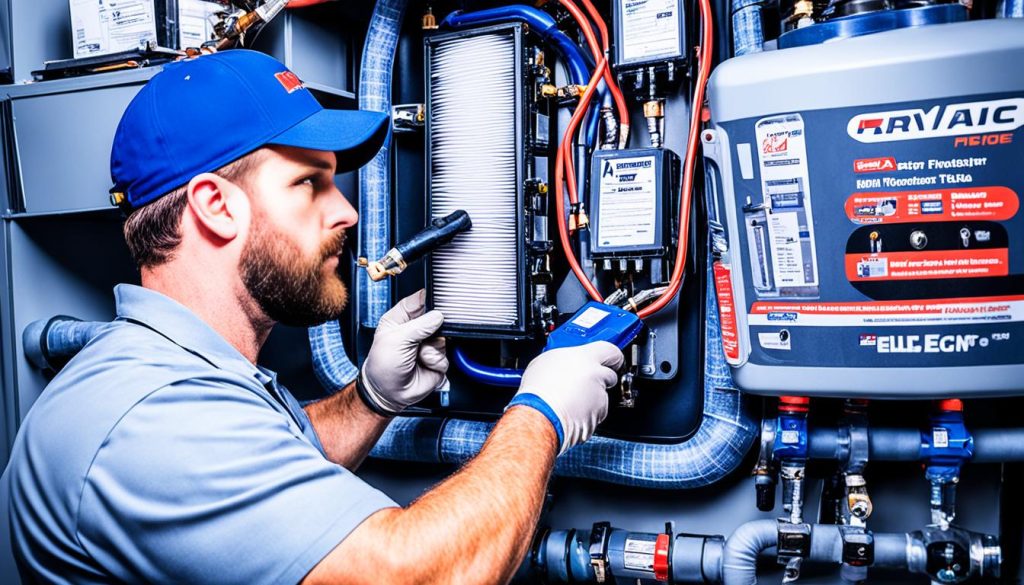
Regular Inspection Routines
A good look at your system is key. Check coolants, the compressor, and how clean everything is. This stops sudden problems and boosts working.
Getting issues early saves big on fix costs. Plus, a well-maintained system lasts longer.
Replacing Filters and Cleaning Ducts
Swap your air filters often and clean the ducts well. Clogged filters make your system overwork and use more energy. Pure ducts mean the air in your house is healthy.
Change filters every 1-3 months to keep things running right. How often depends on how much you use it and your air quality.
Know your HVAC system to care for it better. This keeps it working great all year.
HVAC Troubleshooting Guide
Every home and technician needs an HVAC troubleshooting guide. It helps fix common HVAC problems fast. Knowing these issues leads to better system health and performance.
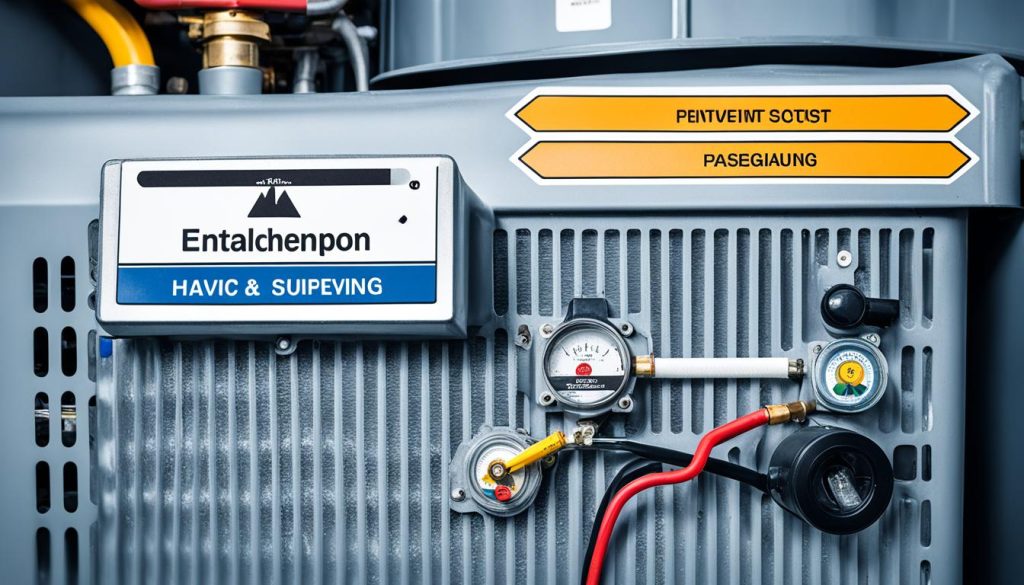
Common HVAC Issues and Their Solutions
Handling HVAC issues can be hard, but many have simple fixes. Here’s how you can tackle common problems with a good HVAC troubleshooting guide.
- Dirty or Clogged Filters: Always swap out filters to keep airflow and efficiency high.
- Refrigerant Leaks: Low coolant means there might be a leak. It’s best to have a pro fix it and top up the freon.
- Thermostat Issues: Check the thermostat’s settings and its batteries. Harder problems may need new settings or a new thermostat.
- Blocked Ductwork: Make sure ducts are clear to keep air moving right and evenly.
- Ignition or Pilot Control Problems: With gas furnaces, check the ignition or pilot light. For persistent issues, call a professional.
Using an HVAC Solutions Guide often stops these issues before they start. It helps your HVAC system run better and last longer.
| Issue | Solution |
|---|---|
| Dirty or Clogged Filters | Replace filters regularly |
| Refrigerant Leaks | Repair leaks and recharge refrigerant |
| Thermostat Issues | Check settings and replace batteries |
| Blocked Ductwork | Clear any obstructions |
| Ignition or Pilot Control Problems | Inspect and repair ignition system |
Using an HVAC troubleshooting guide and an HVAC installation checklist well keeps your system in top shape. Enjoy comfort and energy savings at home or work.
HVAC System Selection
Choosing the right HVAC system for your home is way important. It keeps you cozy and saves energy. Think about your home’s size, the weather, and how much energy you need. This helps you pick the perfect HVAC system for your needs.
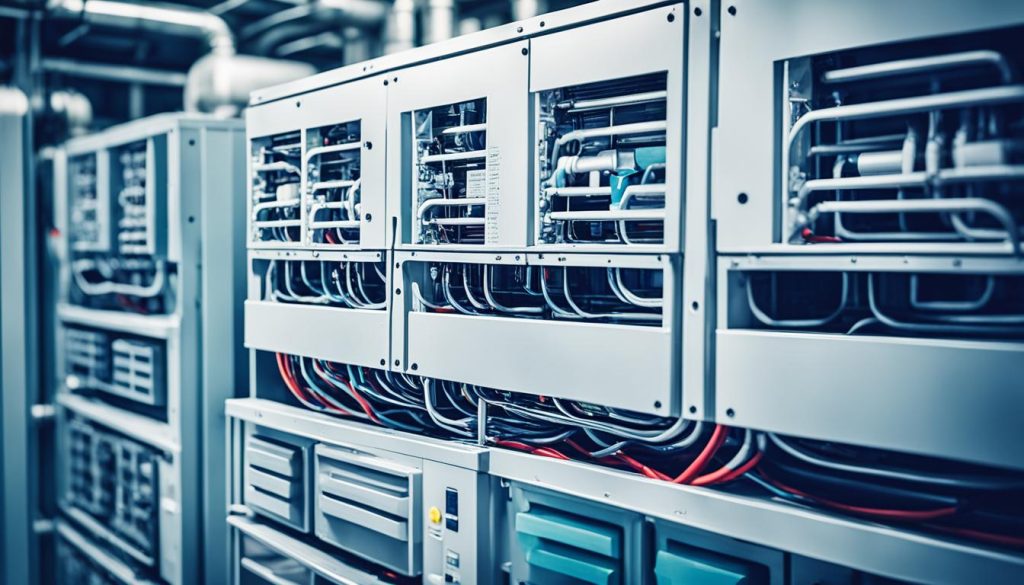
Choosing the Right System for Your Home
Picking an HVAC system means looking at your home’s special features. Does it have a big area, ducts, or is the weather very hot or cold?
- Look at how big your home is: Big homes might need stronger systems. These can be central units or hybrid systems.
- Check for ducts: If your home has ducts, central systems work well. For homes without ducts, look at ductless mini-splits.
- Think about the weather: Hot or cold places might do best with special systems like geothermal. These use less energy.
Factors to Consider When Buying an HVAC System
When choosing from the HVAC systems out there, think about a few key points:
- Efficiency: High-efficiency systems cut energy use and cost less over time. Look for good SEER and AFUE ratings.
- Initial and long-term costs: Some might cost more at first but save you money later. Think about costs over the system’s life.
- Environmental impact: For those who care about the planet, geothermal and hybrid systems are better for the earth.
- Warranty and support: Make sure your system has a good warranty and customer service. You might need help later.
Your HVAC system choice affects your comfort and energy use for many years. By considering your home’s unique needs and checking different systems, you can choose wisely. A choice that supports your aim for an energy-efficient home.
HVAC Installation Checklist
Ensuring a successful HVAC installation is important. It means following a detailed checklist. This helps avoid common problems. It also makes sure your system works well for a long time.
Key Steps for a Successful Installation
Starting the HVAC installation process needs a clear plan. Using an HVAC installation checklist makes things easier. It covers all important steps.
- System Selection: Pick a system that meets your home’s needs. Look at the HVAC Solutions Guide for the best choices.
- Proper Sizing and Load Calculations: The right size is key to efficient use. Wrong size can make your bills go up and wear out the system.
- Ductwork Verification: Good ductwork is a must. Check that ducts are sealed and insulated right to save energy.
- Electrical Connections: Make sure your wires meet local laws. This includes checking volts and circuit safety.
- Refrigerant Levels: The right refrigerant amount is vital for efficient operation.
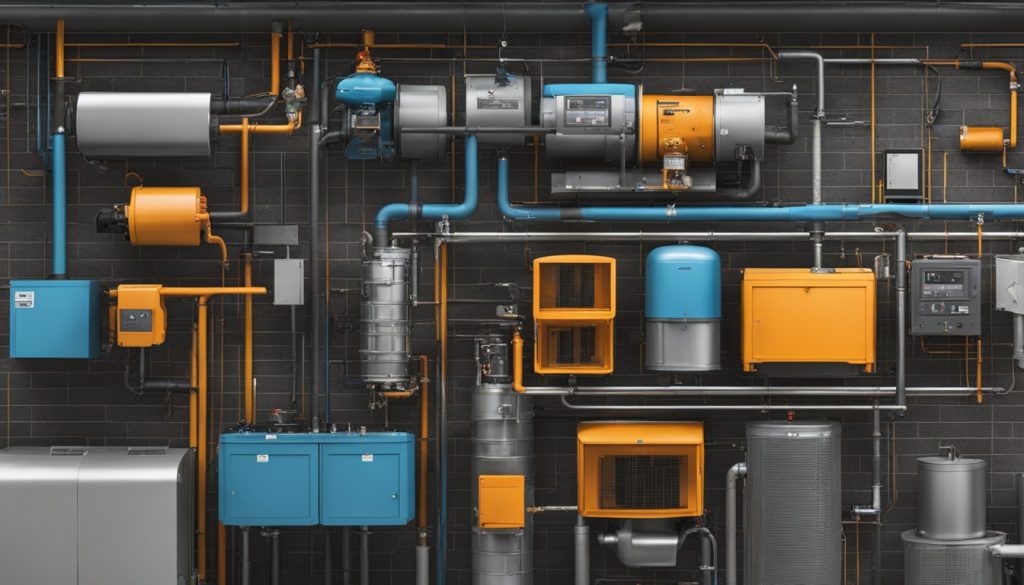
Common Installation Mistakes to Avoid
Avoiding mistakes during installation keeps your system running well. Here are key points to keep in mind:
- Improper Sealing: Ductwork leaks lower efficiency and hike energy costs.
- Incorrect Refrigerant Charge: Too much or too little refrigerant stresses the system and may fail it.
- Skipping Calibration: Make sure the thermostat and sensors are set right for clear system operation.
- Lack of Professional Installation: Having experts install it means it’s done right, avoiding future problems.
- Forgetting HVAC Maintenance Tips: Regular upkeep is key for the best performance. Use the HVAC Solutions Guide for tips.
Sticking to the HVAC installation checklist and avoiding these mistakes boosts your system’s life. For more help, use the HVAC Solutions Guide and do HVAC maintenance tips often.
HVAC Cost-Saving Strategies
There are ways to lower HVAC costs with the right steps and tools. Use methods that save energy. Change how you use your system based on the season. This saves money and keeps your HVAC system running longer.
Maximizing Energy Efficiency
Key to saving money is by using energy-efficient HVAC methods. Think about installing programmable thermostats. They let you control temperatures more precisely. Also, they adjust automatically when you’re not around.
Don’t forget to enhance your insulation. This keeps in heat during winter and out during summer. It makes your HVAC system work less hard.
Seasonal HVAC Usage Tips
To save more, adjust your system based on the season. In winter, lower the temperature when sleeping or out. In summer, use fans to cool down without using the HVAC too much.
Maintaining your system is important. Check refrigerant and clean filters often. This helps the system run well all year.
Here’s a quick list of strategies to reduce HVAC costs:
- Programmable Thermostats: Automate temperature controls to reduce energy waste.
- Regular Maintenance: Clean filters and check refrigerant levels routinely.
- Upgraded Insulation: Improve home insulation to maintain temperature efficiently.
- Seasonal Adjustments: Adapt thermostat settings and usage of fans depending on the season.
By using these strategies, you’ll see lower energy bills. You’ll also help the planet. For advice specific to your home, talk to an HVAC expert. They can help you save more.
| Strategy | Benefits | Implementation Tip |
|---|---|---|
| Programmable Thermostats | Automates temperature control for energy savings | Set different temperatures for day and night |
| Regular Maintenance | Increases system efficiency and lifespan | Schedule bi-annual HVAC check-ups |
| Upgraded Insulation | Reduces heating and cooling costs | Add insulation to attics and walls |
| Seasonal Adjustments | Optimizes system performance throughout the year | Adjust thermostat settings seasonally |
Commercial HVAC Solutions
Commercial HVAC solutions are made to fit the unique needs of bigger businesses and spaces. They make sure the temperature is just right and the air is clean inside. These systems are a must-have for keeping everyone comfy and work-ready. There are many ways to adjust these systems to fit what a business really needs.
Customized Solutions for Business Needs
Choosing the right HVAC setup for workplaces is all about making it just for you. No matter if it’s a big office, a shop, or a factory, each place needs something specially made. With these special HVAC plans, all parts of a place can get the right temperature, thanks to zoned systems. This means people are more comfortable and work better.
Also, these custom systems can work with how your building is already set up. They help everything run smoother.
Advantages of Commercial HVAC Systems
Commercial HVAC systems bring many benefits to businesses. Here are a few:
- They can fit any business size, from tiny offices to huge factories, thanks to their scalability.
- They have cool tech that controls the temperature exactly where you need it, saving energy.
- Linking HVAC with building systems means everything runs in harmony, saving you money.
These perks show why picking the right HVAC is essential for business spaces. It’s about both comfort and smart operation.
Residential HVAC Guide
It’s essential to know your home’s HVAC system well. This knowledge can make your home more comfortable and efficient. This guide helps homeowners with selecting the right unit and using smart strategies.
Optimizing HVAC for Homes
For a top-performing residential HVAC system, choose what fits your home best. Zoning systems are key. They let you set different temps in each room. This saves energy and ups comfort. Also, pick energy-efficient HVAC solutions. High-SEER units and smart thermostats make your system work better.
Cost-Effective Solutions for Homeowners
A big part of this residential HVAC guide is finding smart, budget-friendly solutions. Keep your system healthy with regular care. Stuff like changing filters often and having yearly tune-ups is a must. This keeps costs down and your air clean.
| Optimization Technique | Benefit | Considerations |
|---|---|---|
| Zoning Systems | Improved temperature control; energy savings | Installation costs; require a compatible HVAC system |
| Energy-Efficient Equipment | Lower operating costs; enhanced efficiency | Higher upfront investment; selecting the right SEER rating |
| Regular Maintenance | Extended system lifespan; reduced repair costs | Consistent scheduling; hiring qualified technicians |
| Advanced Air Purifiers | Better air quality; fewer allergens | Additional investment; choosing the right type for your needs |
Use these tips to create a comfy, efficient, and healthy space at home. Combining energy-efficient HVAC solutions and indoor air quality solutions is ideal. It strives for a home climate system that works well, saves money, and keeps air quality high.
Conclusion
This HVAC Solutions Guide is a helpful resource for all your heating and cooling needs. It describes how to choose, maintain, and troubleshoot HVAC systems. By following its advice, you can make sure your systems work well and save money.
It’s important for homes and businesses to understand their HVAC systems. This means more comfort, better air, and lower energy bills.With this guide, you can care for your system better and spend less over time.
This guide is perfect for finding energy-saving tips or fixing problems. It also helps in picking the right system for your place. By using this guide, you can make your home or office a better place to be. Good HVAC care improves life quality a lot.

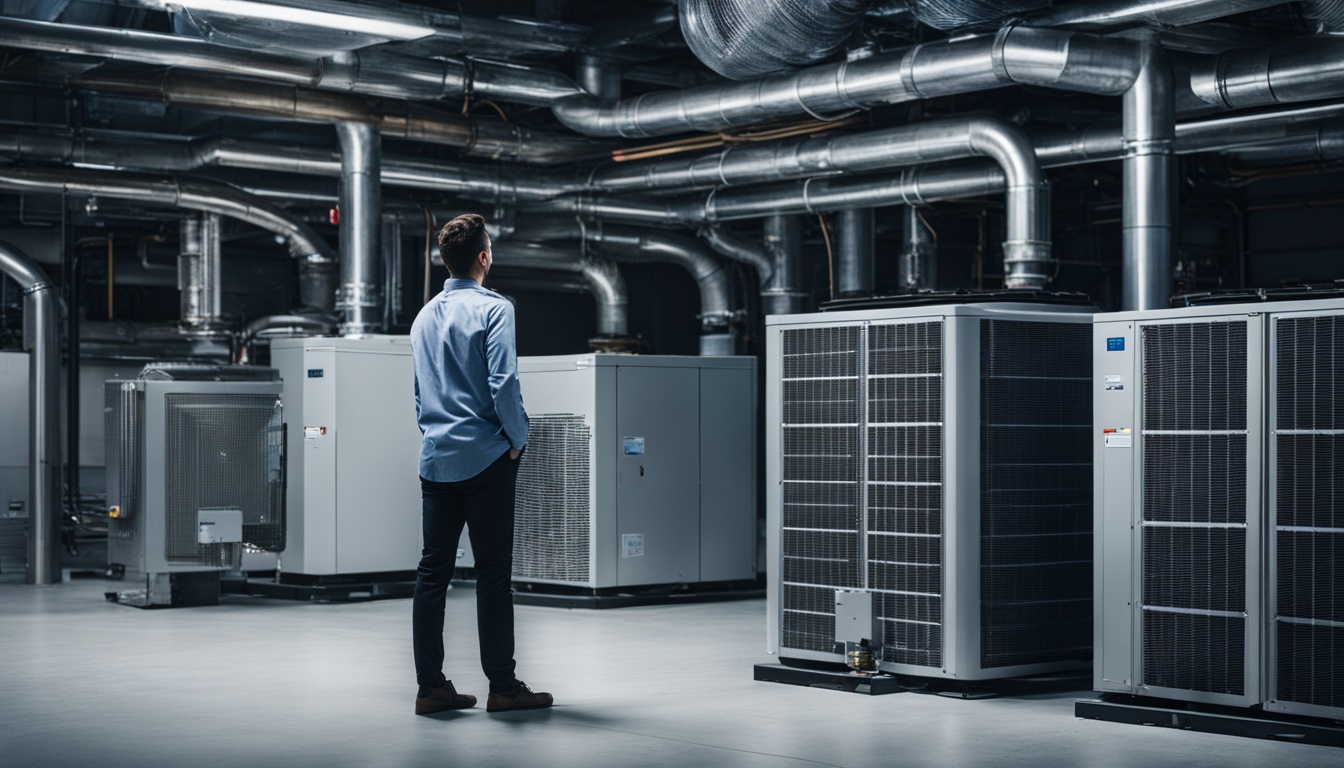



0 Comments